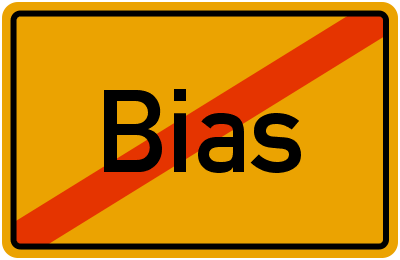27 How Do I Choose the Right Audience for My Argument?
There is a common misconception about writing that it is a solitary exercise. As such, each time you get stuck on a word or sentence, it may be up to you alone to move past that writer’s block. However, that’s simply not true. Beyond the support of your instructor, peers, or tutors, you have an audience that you’re writing to that can help you generate ideas and stay focused. The more we imagine our audience’s likely reactions as part of the writing process, the more likely we are to generate ideas, reach them, and convince them or affect their thinking.

Audience Awareness in the Writing Process
Analyzing your audience affects nearly every stage of your writing, from early drafting to how you revise and get to the final draft. In many cases of academic writing, your audience is your peers and your teacher. However, for our problem/solution essay, I have asked you to identify a specific audience and make your argument to them. To do this effectively, consider the following questions.
-
What does your audience probably already know about your topic? Depending on how much your audience knows, there may be background information you should include or leave out. For example, if you are writing about climate change for a general audience of concerned citizens, you may need to use more detailed explanations for scientific concepts. However, if you are writing on climate change to a group of professionals in the oil industry, you can assume that your audience is more well-versed in the basics of climate science. You can probably use more discipline-specific jargon for a more specialized audience.
-
How is your audience likely to feel about your topic? A skeptical audience needs more evidence than an open-minded one. Is the audience likely to have a prejudice or misconception that needs to be addressed? Assessing how your audience feels may also be the key to finding common ground.
-
What new information can you provide? New information about a topic or its purpose can keep the audience engaged in a way rehashing old information cannot.
-
What is your relationship to the audience? This can affect your tone and how much of yourself you insert into the paper. For example, addressing an authority figure would require a different approach than addressing a relative peer or a complete stranger. For this reason, I have asked you to assume the role of an advocate for a specific organization that is connected to the problem you are trying to solve.
The Effect of Audience on Style
Like a conversation, in addition to your audience affecting what you say, your audience can sometimes affect how you say that content as well. The following items are some things to consider:
-
Purpose: What does your audience care about or believe in? What will move your audience to act? It will help your paper if you can align its purpose with something the audience cares about.
-
Backing: What kind of evidence will convince your audience? Remember what looks like strong evidence to you may appear flimsy to your audience.
-
Sentence Type and Length: Should you use long and complex sentences? Or short ones? The reading level of your paper should match the reading level of your audience.
-
Level of Formality: Should you use technical jargon? Or slang? Avoid the temptation to “sound academic” with technical words and phrases unless the situation calls for it.
-
Tone: Formal or informal? Serious or humorous? Distanced or personal? Hitting the right tone will help your audience take you more seriously.
Reaching Out to the Audience
Many audiences form an opinion about what they read by the end of the introduction. Take advantage of this information to make sure you make a positive first impression. Try to pick a title that your audience may recognize or resonate with. Work on a hook that is geared towards your audience (as opposed to something that is purely provocative or attention-grabbing). Consider making a direct appeal to your audience in the introduction, and end your introduction with a thesis statement modeled after the values you know your reader will identify with.
Addressing a Diverse Audience

While the previous points have been geared towards writing to a specific audience, the following items are some good practices to observe for any audience you may encounter.
-
Recognize your cultural filter: Cultures are formed from a variety of factors like class, gender, generation, religion, and education. Your culture shapes how you view the world and can at times prevent you from understanding different backgrounds. Do your best to understand how your cultural values may be affecting your argument and how they may differ from your audience’s.
-
Avoid ethnocentrism: Assuming that your culture’s values, customs, or beliefs are superior to another’s is ethnocentrism. It’s an attitude that can alienate your audience. Be careful not to assume that all cultural practices are shared. Suspend any judgments or cultural stereotypes.
-
Adopt bias-free language: Biased language is tricky and has a way of sneaking into writing when you least expect it. While you may think writing “the male lawyer” provides important detail, including the lawyer’s gender suggests the law is an inherently male or masculine profession. So, be mindful of any biased, sexist, or stereotypical language that may come from unconscious biases as you’re writing and edit accordingly.
-
Acknowledge issues of oppression. Similar to ethnocentrism, the language we write or speak might convey a negative bias towards individuals or groups. If your message stereotypes a group, even unconsciously, you risk offending your audience. Examples of discriminating language to avoid include:
-
Racism – Your audience will be diverse. By recognizing that there are many cultural frames of reference, you’ll reach each reader or listener effectively. Unless it is necessary, avoid references to ethnicity.
-
Heterosexism – If your essay or speech depicts a relationship, don’t assume that each member of your audience is heterosexual.
-
Ageism – Many pervasive stereotypes exist with regard to the age of individuals. If you write or speak about an elderly person, challenge discriminating ideas such as “old people are feeble” or “teenagers lack wisdom.”
-
Sexism – Archaic sexist usage assumes one male term for all genders. Now we can use a singular they for this purpose. Sexism suggests one sex or gender is inferior to another. Avoid sexist stereotypes such as the idea that females are emotional and men are logical. It’s also important to avoid assuming that gender is binary or based only on biology.
-
You Try It!
Let’s consider how we might use a generative AI tool to define our audience. You’ll be creating a visual argument for this class, testing out two possible audiences for your argument. Using a generative image tool can help you to see how you can appeal to two different audiences. Let’s say your problem is that generative AI tools use too much energy and are contributing to a rapidly warming planet. Your solution is to promote more renewable energy solutions for data centers. First, ask the chatbot for some possible audiences that would be appropriate for your argument. Then, ask a chatbot with image generation capabilities (Microsoft Copilot, Adobe Firefly, Google Gemini, or the paid version of ChatGPT 4o will all work) to create an image that makes an argument to both the audiences you choose.
When I asked ChatGPT 4o these questions, it suggested that I could make the argument to either tech companies or policy makers (such as legislators). I then asked it to generate two images for me for two different audiences. Interestingly enough, it had no trouble generating the first image for tech company leaders. But when I asked for an image for policy makers, it told me this: “I wasn’t able to generate the image due to a content policy issue. We can still work together to create a different approach that fits within the guidelines. Let me know if you’d like to refine the concept or explore another direction for advocating renewable energy solutions to environmental policy makers. I’m happy to assist!” I asked it to reword the image description to fit within its model’s guidelines, and it happily obliged, producing an image designed for policy makers (it shows a shift from brown to green). You can see the two images below.
This activity can help you to describe and visualize your audience’s needs.


Images created by ChatGPT 4o, September 29, 2024.
Attribution
- This content was adapted from Composing Ourselves and Our World by Elizabeth Burrows, Angela Fowler, Heath Fowler, and Amy Locklear, Auburn University at Montgomery, licensed CC BY 4.0.
- Portions of the above were written by Dylan Altman, licensed CC BY 4.0.

